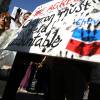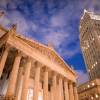Caso Chevron
Forensic Evidence Confirms Ecuadorian Judge Did Not Write Judgment Against Chevron
The Amazon Post 17/03/2015

Steven Donziger and his few remaining followers are touting a “leaked” report related to the computers used by former Ecuadorian judge Nicolas Zambrano when he presided over the trial against Chevron in Ecuador. They claim the report, which was commissioned by the Republic of Ecuador, is some sort of smoking gun that proves Judge Zambrano was the true author of the judgment against Chevron. As usual, their claims are flat out wrong.
In two briefs filed with the International Arbitration Tribunal in August 2014 and January 2015, Chevron outlined in great detail that an examination of Zambrano’s hard drives confirms and bolsters the extensive evidence supporting a U.S. federal court’s conclusion that Donziger and his co-conspirators orchestrated the ghostwriting of the Ecuadorian judgment. The evidence leaves no room for debate that, during the 2013 trial in New York, Zambrano lied under oath when he claimed to be the author of the judgment.
As part of the international arbitration that Chevron initiated against the Republic of Ecuador, two computer experts, one retained by the Republic of Ecuador and one by Chevron, analyzed images of Judge Zambrano’s two computers. The two experts largely agree on the contents of the hard drives, although they differ on certain specifics and on the conclusions to be drawn from the hard drives.
Here are some highlights from Chevron’s briefs:
• The forensic evidence proves that the content of the Judgment was not generated or first drafted on either of Zambrano’s two courthouse computers.
• There is no document on either of Zambrano’s computers that contains the final Judgment as issued on February 14, 2011.
• Based on information provided to Chevron by the Ecuadorian courts, it does not appear that the Ecuadorian Judgment was issued from either of Zambrano’s computers, despite his sworn testimony during the RICO trial that he uploaded the Judgment personally for issuance.
• The forensic evidence cannot account for the presence in the Judgment of content copied from the Donziger’s team’s unfiled work product, but is fully consistent with that content having been copied from numerous USB devices known to have been used on Zambrano’s computers. In fact, both Chevron and Ecuador’s expert agree that text appears to have been copied and pasted from a document that cannot be found on Mr. Zambrano’s computers.
• Although Zambrano testified that he drafted the Judgment on the newer of his two courthouse computers, the forensic evidence actually shows that the draft judgment document was saved repeatedly on Zambrano’s older computer.
• Although Zambrano testified that his assistant conducted legal research of U.S. case law on the Internet and translated those research results, there is no evidence in the Internet history on Zambrano’s computers that can account for the citation of U.S. cases that appear in the draft judgment document.
In short, Judge Zambrano was not the author of the Ecuadorian judgment against Chevron. In fact, when he testified under oath in New York, he couldn’t answer basic questions about the judgment he claimed to have written and appeared to be unfamiliar with its contents.
While some may fall for the smoke and mirrors being used by Donziger and his team to justify their misconduct, the facts are clear and undeniable.
Fuente OriginalNotas relacionadas
-
 Fraudulent Ecuadorian Judgment is Unenforceable Against Chevron’s Canadian Subsidiary
Fraudulent Ecuadorian Judgment is Unenforceable Against Chevron’s Canadian Subsidiary -
 Chevron's (And The Rule of Law's) Triumph: The Supreme Court Declines To Hear Donziger's Appeal
Chevron's (And The Rule of Law's) Triumph: The Supreme Court Declines To Hear Donziger's Appeal -
 Chevron Slams Canadian Backdoor in $9.5 Billion Pollution Fight
Chevron Slams Canadian Backdoor in $9.5 Billion Pollution Fight -
 Canadian Court Rejects Attempt to Enforce Fraudulent Ecuadorian Judgment Against Chevron Subsidiary
Canadian Court Rejects Attempt to Enforce Fraudulent Ecuadorian Judgment Against Chevron Subsidiary -
 The Second Circuit Makes Chevron v. Donziger
The Second Circuit Makes Chevron v. Donziger -
 The Latest Outrage In Steven Donziger's Suit Against Chevron
The Latest Outrage In Steven Donziger's Suit Against Chevron





